

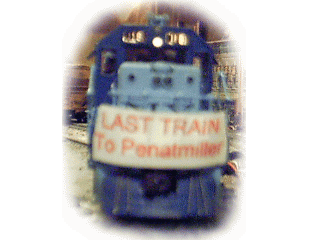
The last train to operate over the original Moose Valley mainline occurred on January 15th, 1972. While this sounds drastic, it was only in the historical sense. The Moose Valley which was built by Francis L. Stewart, formerly of the B&O, has been evolving over the decades. While the line has seen other changes, they were mostly in the form of additions to total route-mileage. Only one siding known as "Mountaintop" was ever abandoned. and it was replaced with an entire yard - Hermann Beers, at Syme Pennsylvania, a non-descript area which is between New Windsor and Mazerville. The line relocation project which begins at Helper, PA., and extends to Millersburg, will render the last 1.5 miles of the original MV mainline obsolete. The new line which will be slightly longer, will have more favorable curves, and will eliminate the slow speeds necessary through the helper area for so many years. While the passing of the last train through the area went relatively un-remarked, it was noted by local rail fans and the tower operators at Hillside Junction, who will be displaced elsewhere on the system once the line closes.
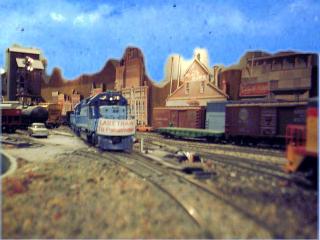
The last train to Pennatmiller was MVC-6, a 12 car train of mostly hoppers and gons, with scrap from the CoPo plant at Enid. Power for the trip was chosen specifically for this assignment.
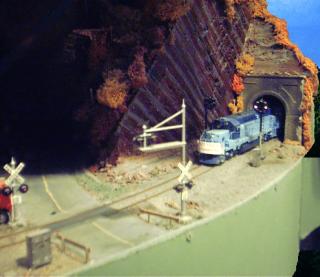
Moose Valley EMD SD-40-2T #118, and ALCO C-425 #119 were selected to have the honors. These units were picked because they are consecutive numbered, represent the majority brands, and both wear the "duo blue" paint scheme which has recently been replaced by what crews are calling the "Too blue" scheme. The duo blue scheme was settled upon shortly after the MV dieselized in 1953, and represents what was prevalent during the lines history. Here we see MVC-6 about to pass the Rt. 140 grade crossing.
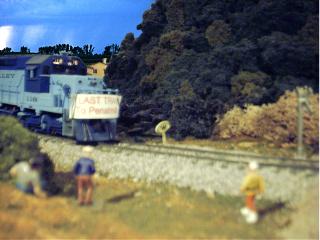
A group of rail fans has turned out at Quarry road on the Valley Loop section of the line. Valley Loop is a popular rail fan area, and represents one of the tougher parts of the line for trains to ascend.
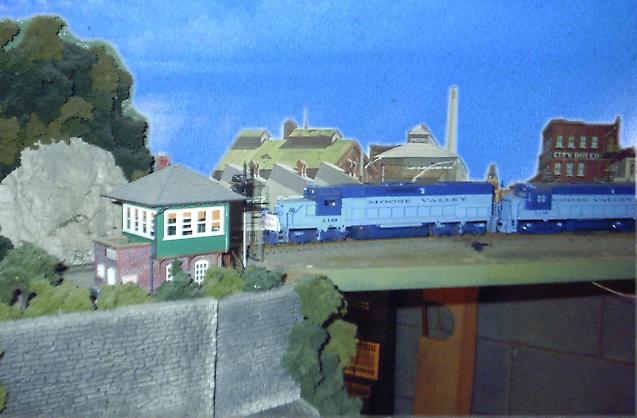
End of the line for Hillside Junction! MVC-6 rattles the windows of the two story brick and wood structure, as the engineer salutes the tower with a few final blasts of the horn. Second trick operator Allen Broom salutes the passing train for the last time, as the Pennatmiller signals illuminate a change of aspect and mark a permanent stop through which no train will travel. M of W crews are nearby, and will begin the painful task of making preliminary signal circuit changes.

Hillside Junction Tower
1929 - 1972
43 years of faithful service.